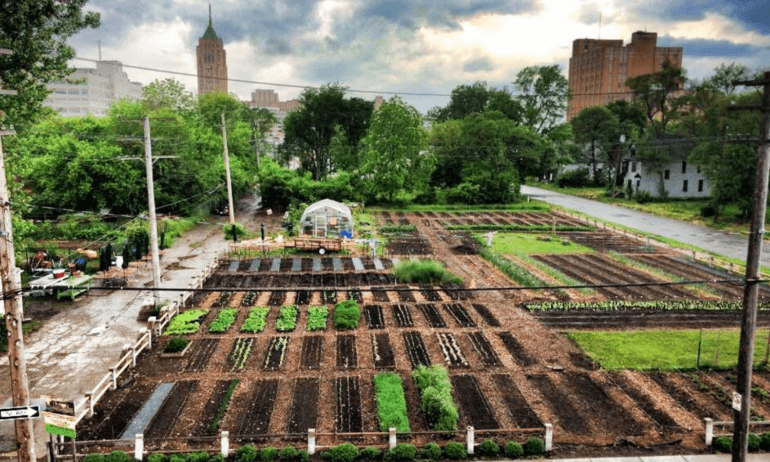Getting The City Blooming To Work
Getting The City Blooming To Work
Blog Article
The smart Trick of City Blooming That Nobody is Discussing
Table of ContentsThe Ultimate Guide To City BloomingLittle Known Facts About City Blooming.The Ultimate Guide To City BloomingUnknown Facts About City Blooming10 Easy Facts About City Blooming Described
Intrigued in expanding food up for sale in the City of Chicago? Considering starting a neighborhood garden? Modifications to the Chicago Zoning Statute permit farming usages like community gardens and metropolitan farms in many parts of the city. Below is a checklist of regularly asked inquiries regarding the guidelines and guidelines that farmers must take into consideration when planning an urban farming project.
The zoning amendment does not customize any kind of other codes handling composting, building authorizations, acquiring or leasing City possessed property, business licenses or ecological contamination. There are existing codes that regulate these issues and they remain completely effect and may apply to your job. Area yards are usually had or taken care of by public entities, civic companies or community-based companies and maintained by volunteers.
Urban farms expand food that is planned to be offered, either on a nonprofit or for-profit basis. Due to their commercial function, urban ranches need a service permit. Yes. A neighborhood garden is enabled to offer surplus generate that was expanded on site if the sales are accessory or secondary to the garden's key objective defined above.
The Greatest Guide To City Blooming
The amount of compost material can not go beyond 25 cubic backyards at any kind of given time according to the standards in 7-28-715 of the City's Municipal Code. Because the soil at a lot of brand-new yard websites needs amending, compost, soil, wood chips, or various other materials can be obtained to construct or enhance the growing area.

If a structure license is required after that the hoophouse will certainly be considered an accessory structure. You can figure out more regarding the structure authorization needs by calling the Division of Structures. The 25,000-square-foot size limit is intended to prevent a single area yard from dominating a given block or interfering with the block's existing residential or business personality.
The limitation does not put on yards located in Public Open Room (POS) districts. Can there be even more than one neighborhood garden that is 25,000 square feet on a solitary block? Yes. The size limitation applies to individual yards, not to individual blocks. No. Fence is not required, nevertheless, gardens that have big parking locations may be called for to mount secure fencing or various other landscape design features.
City Blooming Can Be Fun For Everyone
B1 & B2 districts call for that all commercial use tasks be performed indoors. Is fence needed for city ranches? Fencings might be called for, along with landscape design and screening, for certain parking locations and outdoor work or storage areas depending on area and the specific task taking location.
Yes. Urban farms call for structure authorizations and zoning approvals before construction. Other types of city evaluation may be called for depending on specific structures, activities, dimension, landscape design, licensing, public health and stormwater management problems. A number of these needs are determined in the task design or allowing procedure, nonetheless, the candidate may be responsible to independently identify details licenses or permits that might be called for.
Yes. The kind of permit is determined by what is taking place at the website. The Department of Organization Affairs and Customer Protection can aid determine the specific kind of business permit that's needed. Yes. Off street auto parking is required for the majority of business projects in Chicago. The required number of garage is based on the number of staff members servicing site and not the square video of the growing area.
Some Ideas on City Blooming You Should Know

Yes. A city ranch can offer garden compost material produced on website, nonetheless, the procedure has to abide by the regulations in 7-28-715 of the Chicago Municipal Code. Yes. Aquaponic systems are permitted inside on urban ranches in lots of zoning districts. Nonetheless, a zoning evaluation and building permit is called for in order to mount structures or systems and a service permit is required as explained above.
Approximately 5 hives or swarms of honey might be kept as an accessory usage. However, beekeepers need to sign up with the Illinois Division of Agriculture. To learn more concerning the recommended zoning modification you may call the Department of Housing and Economic Growth, Bureau of Planning and Zoning at 312.744.8563.
Farming in cities and urban areas A city farm in Chicago. Urban farming refers to various practices of cultivating. https://danielnold94107.wixsite.com/my-site-1/post/city-gardening-a-green-oasis-in-urban-spaces, processing, and dispersing food in metropolitan areas. The term likewise puts on the area activities of pet husbandry, tank farming, beekeeping, and cultivation in a metropolitan context. Urban farming is identified from peri-urban agriculture, which occurs in backwoods at the edge of suburban areas.
An Unbiased View of City Blooming
, who seek to create social networks started on a common ethos of nature and community holism. These networks can develop by method of formal institutional support, coming to be incorporated right into neighborhood community preparation as a "shift town" motion for sustainable city growth.
Some of the very first evidence of city farming comes from Mesopotamia.
Report this page